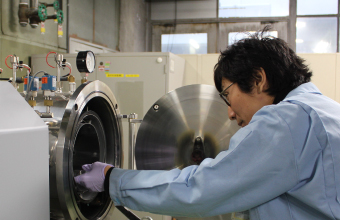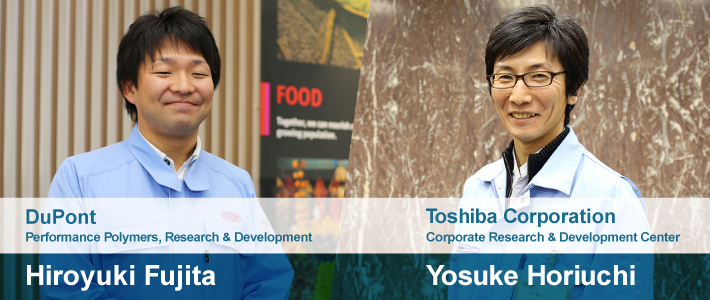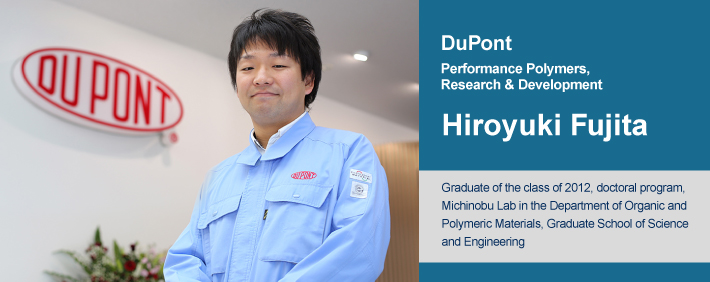
"I felt that I would not be able to do a good job as a researcher even if I could find a job after earning a master's degree," said Horiuchi, explaining the reason why he chose to move on to the doctoral program.
"I conducted research on metallic materials in a master's program at another university. The research focused on the evaluation of metals that other people synthesized, but I wanted to design and synthesize materials of my own with specific characteristics."
Horiuchi chose to study at the Tokyo Tech Precision and Intelligence Laboratory under Professor Emeritus Kenji Wakashima and Professor Hideki Hosoda. His research in the doctoral program focused on the development of shape-memory alloys and their application to the living body. Shape-memory alloys have been used in stents4 and orthodontic wire, but they contain nickel, which tends to trigger allergic reactions. Horiuchi focused on the commercialization of titanium alloys to prevent this.
Horiuchi looked back on his research and said, "Learning under Professors Wakashima and Hosoda gave me a chance to gain experience in all the processes of research and development regarding metals, from designing the experiment, to conducting it and evaluating performance all by myself. This is the greatest gift that I received from the doctoral program." He continued, "A big difference between the master's and doctoral programs is that the doctoral program allows us to establish our own standards, from which we can develop judgment. This, I believe, becomes strength and confidence when we leave school and start working."
After the doctoral program, he joined Toshiba Corporation and was assigned to the Corporate Research & Development Center, which deals with magnetic materials that he had no knowledge or experience with. He was a bit disoriented at first.
"At the beginning, I was very anxious about having no knowledge or experience with the materials. However, after I understood that the knowledge and technology that I gained during my studies could be used for magnetic materials, the possibilities for my research and development broadened. I continue being aware of my responsibility regarding environmental issues, and endeavor to develop innovative metallic materials."
 Sintering furnace for magnets
Sintering furnace for magnets
Finally, Horiuchi gave a message for students studying in the master's program.
"The doctoral program is not easy, and is a challenge to finish if you are not highly motivated. Once you decide that this is the way to go, however, I am sure that you can overcome any difficulty. The experience I had in the doctoral program has become a great benefit in my current work. If you have a definite goal and you feel the need to move on to a doctoral program to achieve it, have confidence and pursue your dream."
1 Tenure-track faculty
Faculty members who are employed as fixed-term faculty with five- to seven-year term limits. Tenure-track faculty become tenured faculty upon producing notable research findings and other achievements.
2 Global COE (Centers of Excellence) Program
Funding support program offered by the Japan Society for the Promotion of Science for establishing education and research centers to elevate the international competitiveness of Japanese universities.
3 Rare earth elements
A set of seventeen chemical elements in the periodic table. They are separated from ores as single elements through a difficult and costly process.
4 Stent
A metal tube used to expand the esophagus and blood vessels.
. Any information published on this site will be valid in relation to Science Tokyo.












